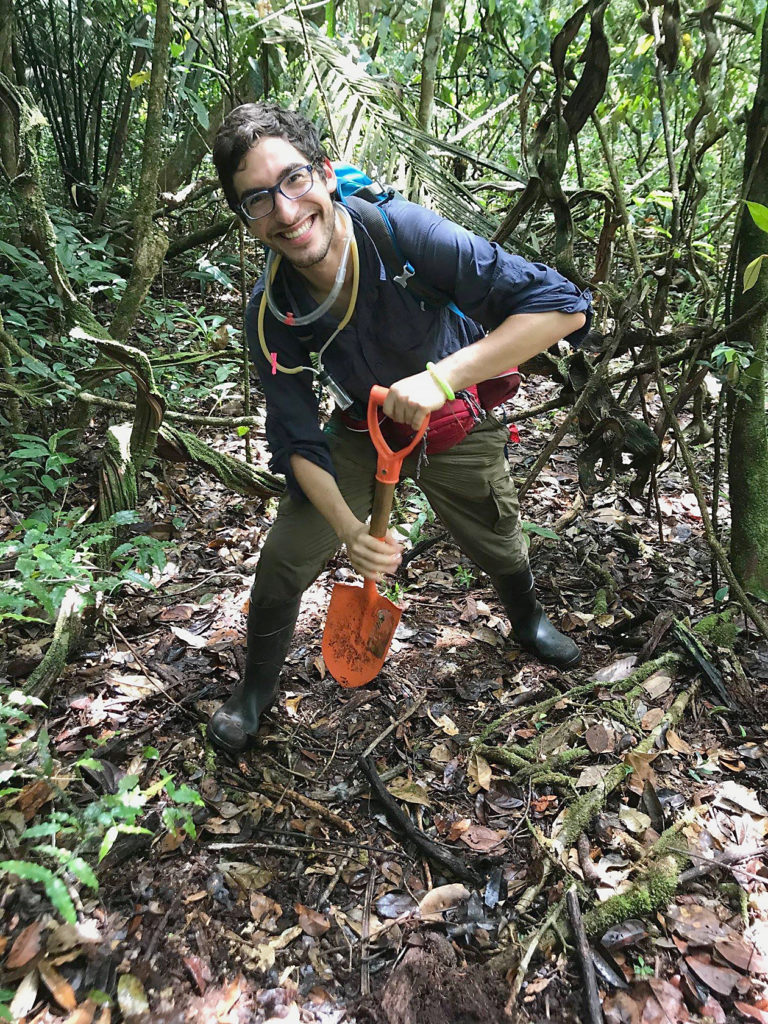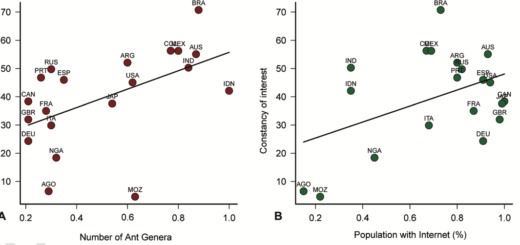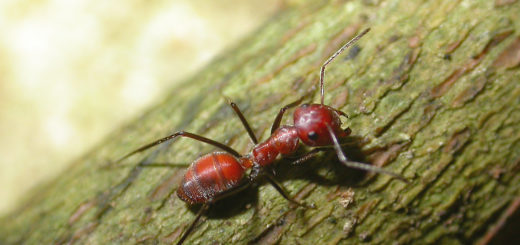Viruses of ants – diversity and impact
In the review article by Baty et al. (2020) “Viruses and their effects in ants (Hymenoptera: Formicidae)” published in Myrmecological News, the authors conduct a comprehensive review on the diversity of viruses within ants as well as the known effects these viruses have on ant populations. While ants have been known to be infected by viruses since the mid-1900s (Steiger et al. 1969), the advent of Next Generation Sequencing (NGS) has greatly expanded the discovery rate of novel viruses infecting ants. Still, very few of the over 13,500 species of ants have been sampled for potential viral infections to date. NGS does not require prior knowledge of viral genomic sequences, allowing for more frequent viral discovery within understudied host organisms, such as ants. Currently, there have been 87 viruses found within 38 ant species across 15 viral families. Of these viruses, 40 were only identified with NGS data without testing for viral replication. If an ant tests positive for viral replication, one can be more confident the ant is being parasitized and is the true host of the virus. Documenting ant-associated viral diversity is important, but it is also important to understand what, if any, impact these microbes have on their hosts. This is where this review really shines.
A Review by Peter J. Flynn and Corrie S. Moreau
Most identified ant viruses are positive-sense single-stranded RNA viruses (+ssRNA), which are particularly prone to switching hosts because of their high mutation rate (Holmes, 2009). For this reason, these viruses often infect multiple host species. Current evidence suggests that these viruses are often transmitted horizontally (individual to individual) throughout ant colonies. Trophallaxis, the feeding behavior where ants transfer of food or fluids between individuals within the colony, is believed to be the primary method of horizontal transmission. Though few studies have confirmed this, vertical transmission (mother to offspring) of viruses has been observed in a few ant species as well.
Most of the discovered ant viruses come from invasive ant species, such as Solenopsis invicta (red imported fire ant) and Linepithema humile (Argentine ant). The bias derives from a more intensive sampling of invasive ants, since viruses in these species may be candidates for potential biocontrol agents. Three of the most well-studied ant viruses are solenopsis invicta virus 1, 2, and 3 (SINV-1, -2, -3), which infect ants within the genus Solenopsis. These viruses affect the ant colony in distinct ways. SINV-1 and -2 both often remain in a colony as a chronic, asymptomatic infection unless the colony is stressed (Valles, 2012). On the other hand, SINV-3 is far more pathogenic and highly infectious and can be easily transmitted between colonies. Therefore, SINV-3 has potential as a biopesticide. One issue with this application is that the virus shows seasonal fluctuations, proving to be more widespread and pathogenic at cooler temperatures. In addition, it can take several months for SINV-3 to cause significant mortality from starvation within an ant colony. The most effective viral biocontrols are able to kill a colony quickly, yet these are the hardest viruses to find in nature since the affected ant colony is often decimated before it can be sampled.

Invasive ants have also been more frequently sampled in order to test whether they serve as reservoirs for detrimental honeybee viruses. Since honeybees are economically important pollinators, there has been substantial research into discovering whether these viruses are maintained within invasive ant populations. The most common viruses found across ant species are all associated with and were first discovered within honeybees. There appears to be frequent transmission between honeybee hives and ant colonies due to ant raids on bee colonies (Image 1). Though these viruses are often thought of as “honeybee viruses,” they have been observed to infect many other hymenopteran hosts and may have actually evolved in a non-bee hymenopteran and jumped hosts over time (Loope et al. 2019).
Most research on ant viruses has focused on the discovery and molecular characterization, with a few recent studies beginning to delve into the effect of the viruses on ant behavior. Dramatic transformations in behavior within infected ant colonies have been observed for some ant viruses. For example, ant colonies infected with SINV viruses decrease protein and lipid intake, which can eventually lead to malnutrition and subsequent starvation (Valles et al. 2013). In addition, SINV-1 has been observed to decrease competitive ability within infected ant colonies (Chen et al. 2011). Conversely, when Anoplolepis gracilipes colonies are infected by TR44839 virus, they become more aggressive towards other ant colonies (Hsu et al. 2019).
The review by Baty et al. highlights the fact that we have just scratched the surface in our understanding of ant viruses. While NGS technologies have allowed researchers to discover a wide array of ant viruses, only a tiny fraction of the ant species worldwide have been sampled, focusing primarily on invasive species. More extensive investigation is needed to both identify if these discovered viruses can replicate within their ant hosts, as well as carefully examining how viral infection impacts these ant communities. With these new sequencing technologies available and this extensive review on ant viruses, we suspect we will see an explosion of studies exploring this important symbiotic interaction.
Did the article spark your interest? Click here to read the open-access paper or have a look at a video below made by the authors. If you prefer YouTube, click here.
References
Baty, J.W., Bulgarella, M., Dobelman, J., Felden, A. & Lester, P.J. 2020: Viruses and their effects in ants (Hymenoptera: Formicidae). – Myrmecological News.
Chen, Y.C., Kafle, L. & Shih, C.J. 2011: Interspecific competition between Solenopsis invicta and two native ant species, Pheidole fervens and Monomorium chinense. – Journal of Economic Entomology 104: 614-621.
Holmes, E.C. 2009: The Evolutionary Genetics of Emerging Viruses. – Annual Review of Ecology, Evolution, and Systematics 40: 353-372.
Hsu, H.W., Chiu, M.C., Lee, C.C., Lee, C.Y. & Yang, C.S. 2019a: The association between virus prevalence and intercolonial aggression levels in the yellow crazy ant, Anoplolepis gracilipes (Jerdon). – Insects 10.
Loope, K.J., Baty, J.W., Lester, P.J. & Wilson Rankin, E.E. 2019: Pathogen shifts in a honeybee predator following the arrival of the Varroa mite. – Proceedings of the Royal Society B: Biological Sciences 286: 20182499.
Steiger, U., Lamparter, H.E., Sandri, C. & Akert, K. 1969: Virus-like particles in cytoplasm of neurons and glial cells of wood ants. – Archives of Virology 26: 271-282. (in German).
Valles, S.M. 2012: Positive-strand RNA viruses infecting the red imported fire ant, Solenopsis invicta. – Psyche: A Journal of Entomology 2012: 1-14.







A very interesting and captivating article. Fantastic!!!